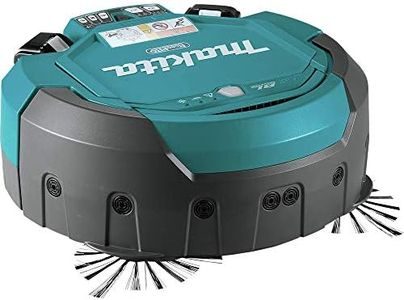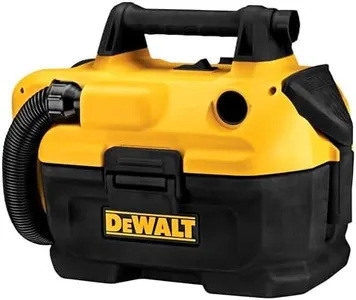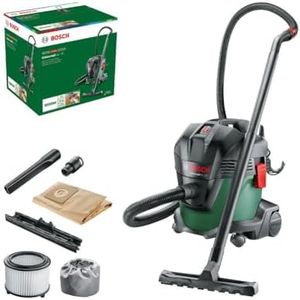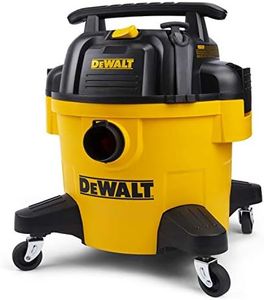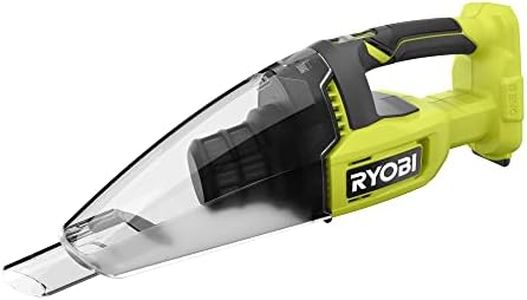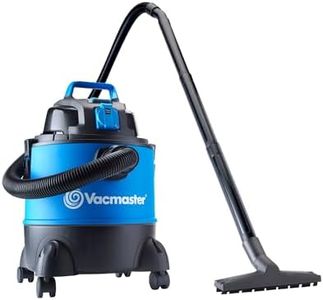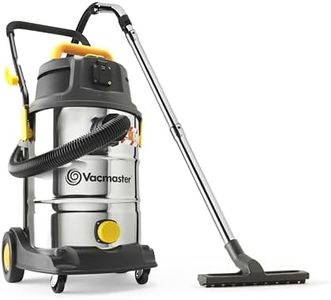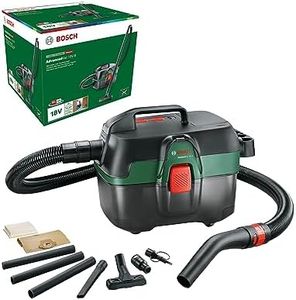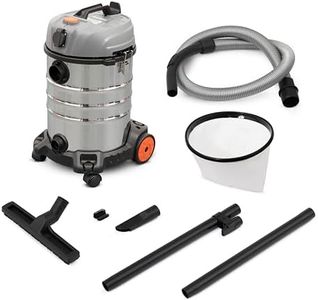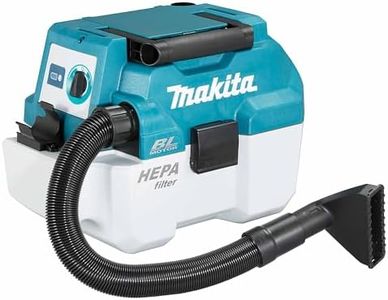We Use CookiesWe use cookies to enhance the security, performance,
functionality and for analytical and promotional activities. By continuing to browse this site you
are agreeing to our privacy policy
10 Best Powerful Shop Vac
From leading brands and best sellers available on the web.Buying Guide for the Best Powerful Shop Vac
When you're choosing a powerful shop vac, it's important to consider both the environment in which you'll use it and the type of debris you'll be cleaning up. Shop vacs are used for tough cleaning jobs and can handle everything from dust to large debris or liquids, so you want the one best suited to your tasks. Pay attention to core specifications that indicate power, capacity, and convenience, as these will directly impact your satisfaction. Understanding what each spec really means will help you avoid unnecessary features and select a shop vac that fits your needs and expectations.Motor Power (Horsepower/Amperage)Motor power is often measured in peak horsepower or amperage and refers to the strength of the vacuum's engine. A higher value here means more powerful suction, which is essential if you're dealing with heavy debris or liquids. Motor power typically ranges from about 1 HP (lighter jobs) up to 6 HP or more (heavy-duty jobs). If you'll be cleaning small garages or light sawdust, a lower-powered model is sufficient; for construction sites or frequent heavy messes, go for higher horsepower or amperage.
Tank CapacityTank capacity is the volume of debris (including liquid) the shop vac can hold before you need to empty it. This one is measured in gallons. Smaller tanks (2–6 gallons) are easier to move and great for simple home tasks, but need frequent emptying. Medium tanks (8–14 gallons) offer a balance for home workshops and garages, while larger tanks (16+ gallons) are ideal for industrial or big cleanup jobs. Choose bigger tanks if you're dealing with large messes to save time on emptying, but if mobility is crucial, consider a smaller tank.
Suction (CFM and Sealed Pressure/Water Lift)Shop vac suction ability is often measured by CFM (cubic feet per minute) and sealed pressure (also called water lift, in inches). CFM determines how fast air moves through the vacuum, which is great for picking up fine dust and large volumes of air. Water lift measures how strongly the vac can pull up heavier items or water—higher numbers mean better performance with wet cleanup or thick debris. For fine dust and overall cleanup, focus on high CFM; for wet pickups or heavy debris, value water lift more. Match the spec to your most common messes.
Filtration SystemThe filtration system determines how well the shop vac traps dust and prevents it from blowing back into the air. Basic units have standard filters, good for large debris. HEPA or high-efficiency filters catch fine dust, allergens, and even mold, which is crucial if you have allergies or are working indoors. If you mainly vacuum large particles, standard filters are fine, but for sawdust, drywall dust, or health concerns, consider vacs with advanced or HEPA-grade filtration.
Portability and Build QualityPortability refers to how easy the shop vac is to move around. Lighter units and those with wheels offer more maneuverability, especially in tight spaces. Build quality is about the durability of the outer shell and attachments, important if the vac will face rough treatment or be transported often. If you'll always keep it in one place, weight might not matter, but for moving across sites or floors, lighter and sturdier units will save effort and prevent breakage.
Wet/Dry CapabilityWet/dry capability tells whether the shop vac can safely pick up liquids as well as dry debris. If you expect to deal with spills, flooded basements, or need to vacuum up water, make sure this feature is present. If not, a dry-only vac could be enough. Always check the manual to confirm safe operation with liquids.
Hose and Cord LengthThe length of the hose and power cord affects reach without moving the vacuum. Longer hoses make it easier to clean big rooms, vehicles, or hard-to-reach spots. Likewise, a long cord means you won't need to constantly hunt for outlets. For small spaces, this is less critical, but for garages or large workshops, prioritize extended length to reduce hassle.
